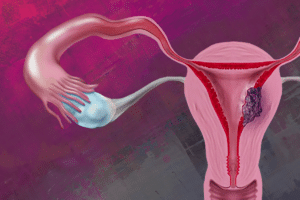In a study by Cohen and colleagues to evaluate the impact of headache on personnel deployed in war zones and to identify factors associated with return to duty (RTD), only 33% of the 985 participants (mean age, 29.6 years; 87.5% men) who were medically evacuated from Iraq and Afghanistan between 2004 and 2009 with a primary diagnosis of headache, returned to duty; the most common headaches being post-concussion (34.1%) and migraine (30.0%). Headaches typically associated with trauma such as post-concussion (18.7%), occipital neuralgia (23.1%), and cervicogenic headache (29.7%) had the lowest RTD rates, whereas tension headache (49.6%) was associated with the best outcome.1
Lead study investigator, Steven P. Cohen, MD, an Associate Professor of Anesthesiology and Critical Care Medicine at Johns Hopkins University School of Medicine, Baltimore, Maryland, and a Colonel in the US Army Reserves, also documented that a significant number of headaches could be attributed to damage or pressure on the occipital nerve. The results, Dr. Cohen noted, “of many long hours spent wearing heavy Kevlar helmets.” “Everyone who goes on patrol wears a Kevlar helmet,” Dr. Cohen said. “They are heavy. They are hard to wear. But if you get a headache from your helmet, you still must wear it. If you can’t tolerate your helmet, you can’t do your job. It would be too dangerous. So these folks end up being evacuated and not returning to duty.”2
The most frequent inciting event for headache in participants was by far was physical trauma (47.6%). Tension headache (49.6%) was associated with the highest RTD rate, and rates were for postconcussion (18.7%) and occipital neuralgia headache (23.1%), both of which are associated with trauma, were the lowest.1 Participants who returned to duty, were more likely to be significantly older and more likely to be women and to be officers, rather than enlisted service members, with marines having the lowest RTD rates. It was also found that treatment with opioids and beta-blockers was associated with a greater likelihood of not returning to duty; a practice discouraged by experts and treatment guidelines in otherwise healthy patients with refractory, chronic daily headaches.3 However, patients not receiving treatment were most likely to return to duty.2 “The key finding in this study is that a deployed person medically evacuated from theatre with a primary diagnosis of headache was nearly twice as likely to continue treatment in garrison as they were to return to duty with their unit.”1 A finding, which calls for better guidelines for the management of headache in theatre and postevacuation.
To read more, download the Full text.
Sources:
- Cohen SP, Plunkett AR, Wilkinson I, et al. Headaches during war: Analysis of presentation, treatment, and factors associated with outcome. Cephalalgia. 2011 Oct 18. [Epub ahead of print] PMID: 21994113.
- Anderson P. Headache significant cause of attrition in deployed soldiers. Medscape Medical News. Medscape Website. http://www.medscape.com/viewarticle/751858?src=nl_topic Posted October 20, 2011. Accessed October 26, 2011.
- Saper JR, Lake AE. Continuous opioid therapy (COT) is rarely advisable for refractory chronic daily headache: limited efficacy, risks, and proposed guidelines. Headache. 2008;48(6):838–849. PMID: 18549361.







